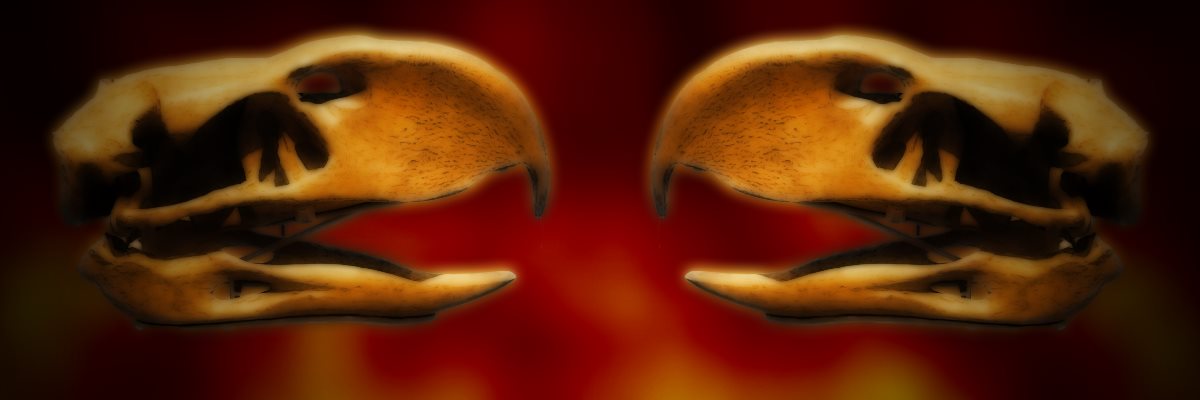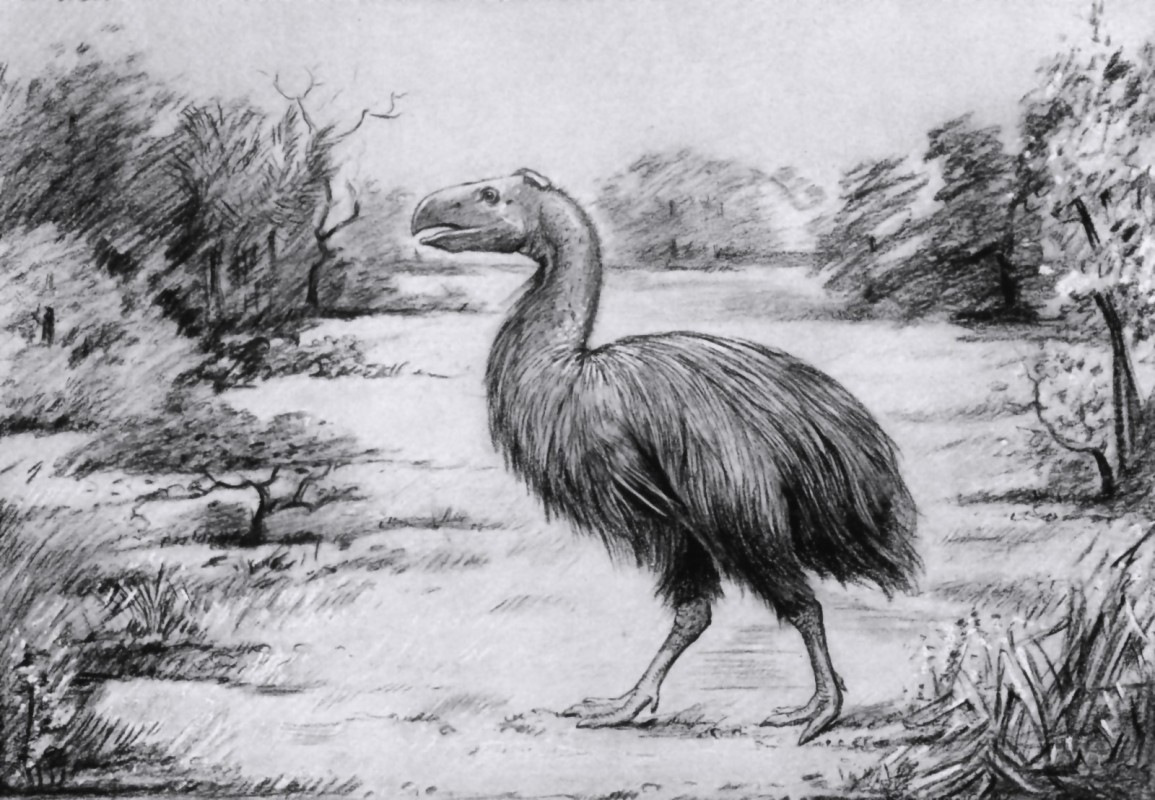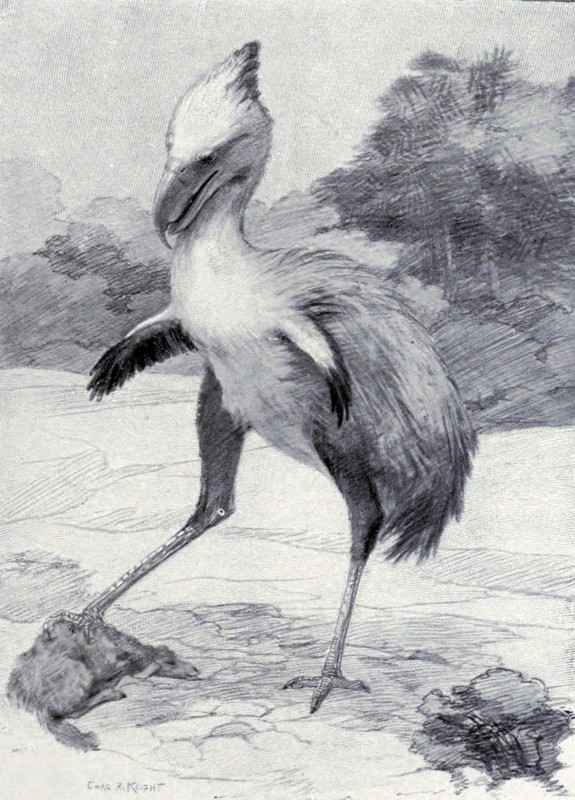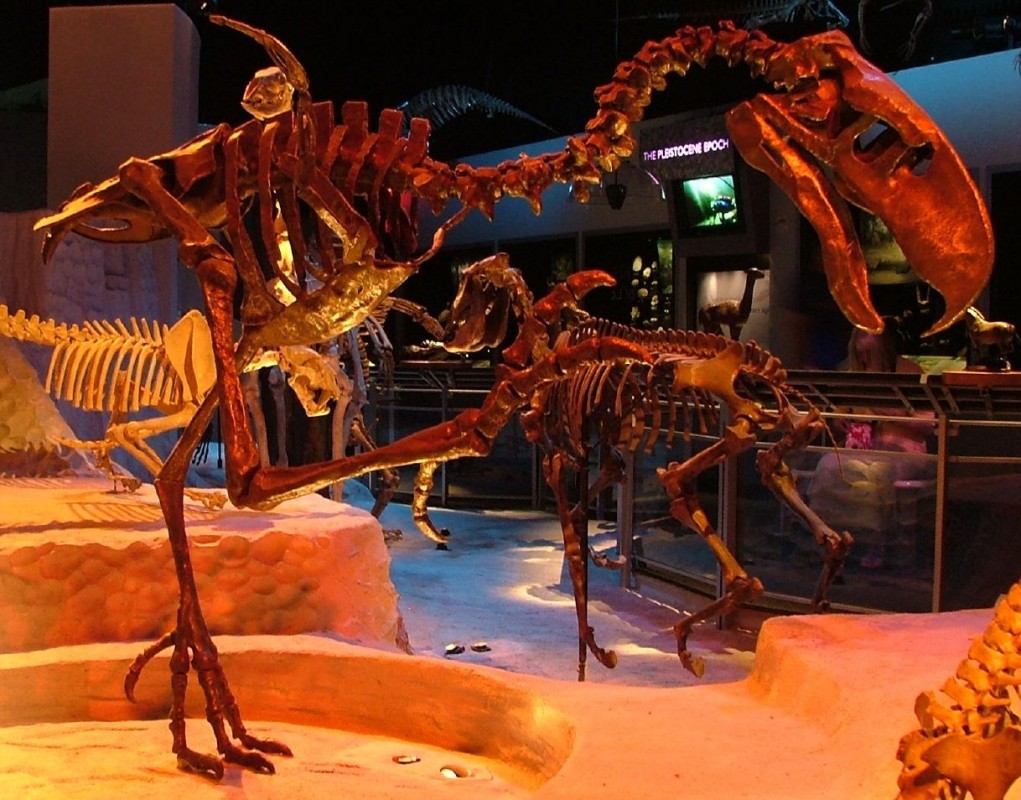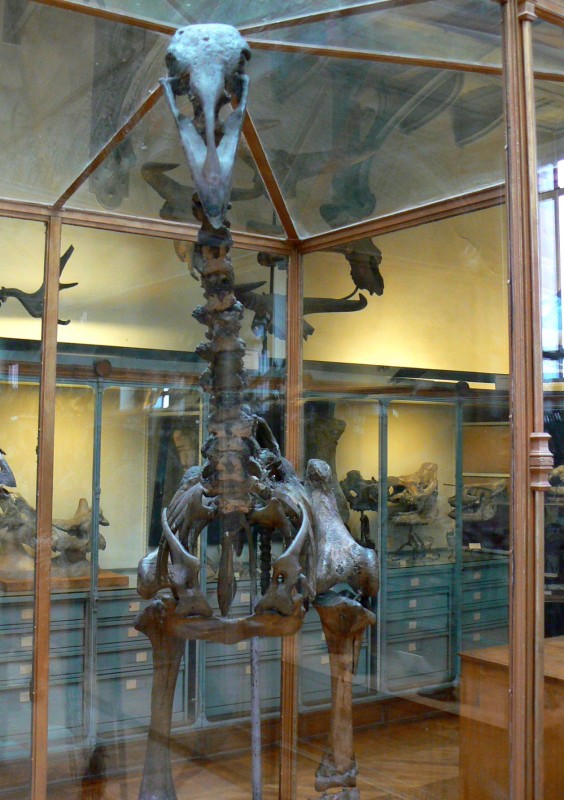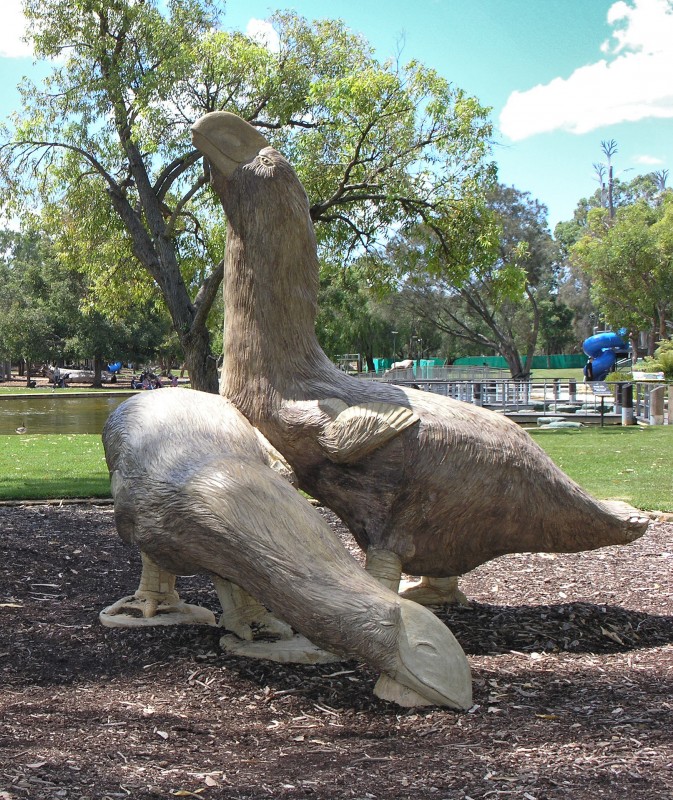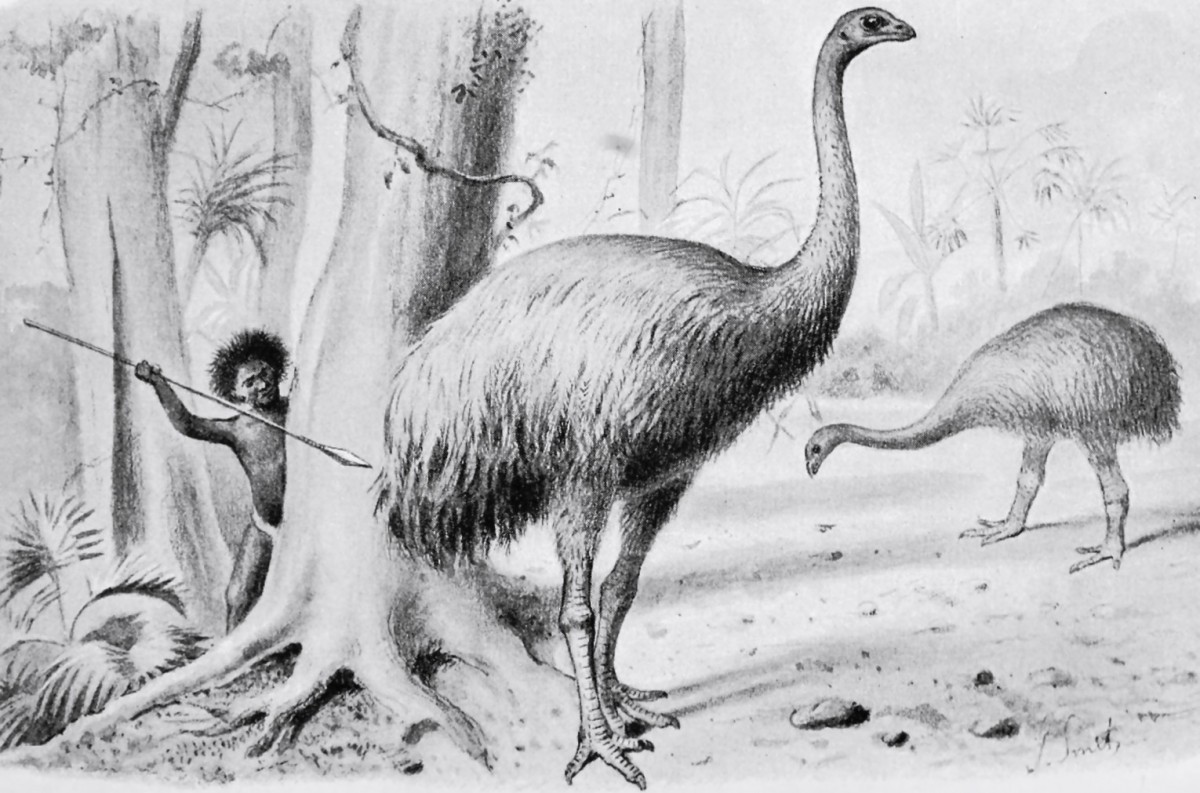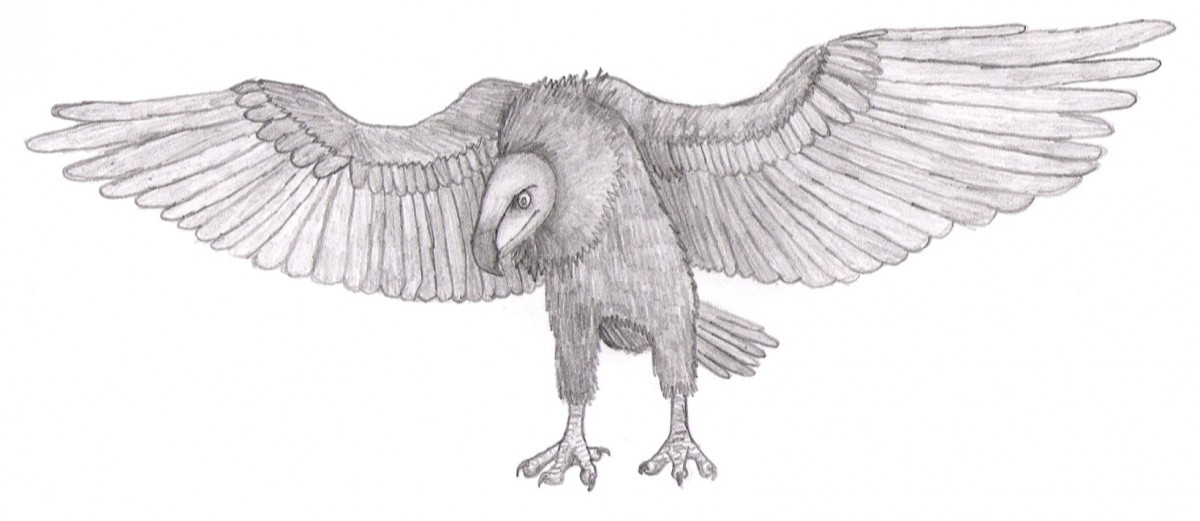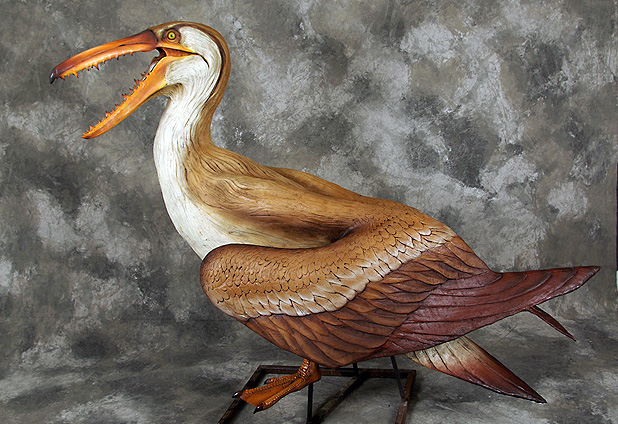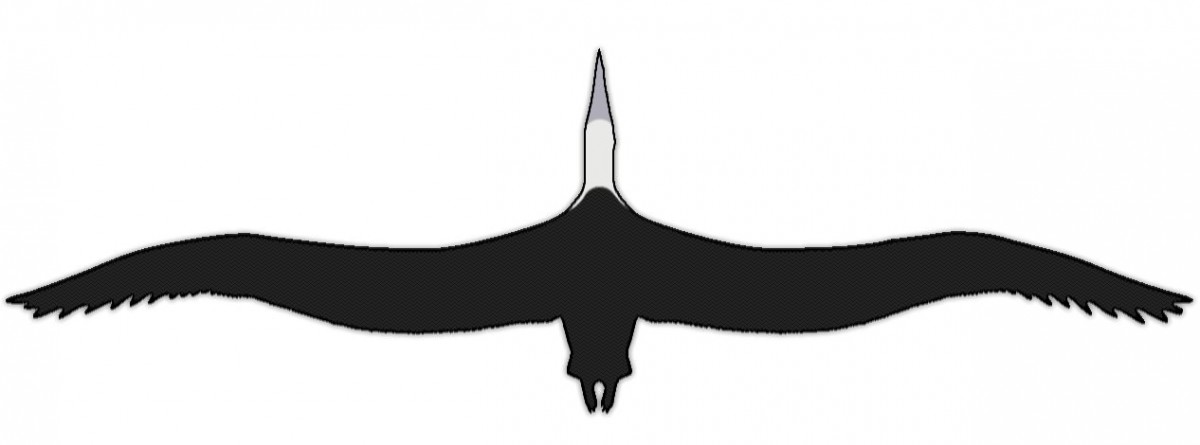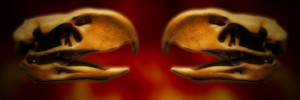What would you do if you could travel in time? What moment from the past would you choose? I think I know the first answer that comes to mind! I would also like to relive a moment from my past and do things differently, but this is not what I am referring to.
I was thinking about a return to more distant times. How was life on Earth several million years ago? This is the period I would like us to visit together.
Only the imagination, for now! I have not yet discovered a time machine to take us there.
And if we get there, at least we know that not everything that glitters is gold. Or that not all birds fly (but we already knew that).
Let’s see which are the largest birds currently extinct. I will not rank the birds, because each, in its own way, is great – just like you can not compare half a ton to 7 meters. But I will give you a lot of astonishing details about these magnificent creatures. That way we’ll know which ones to beware of if we really ever travel in time. Or which ones to befriend!
On this page:
- 1 Gastornis Giganteus – the largest bird
- 2 Paraphysornis Brasiliensis – old terror bird
- 3 Kelenken Guillermoi – the bird with the largest head
- 4 Phorusrhacos longissimus – armed from head to toe
- 5 Brontornis burmeisteri – the heaviest bird of prey
- 6 Titanis walleri – the giant hunter
- 7 Andalgalornis steulleti – hard headed
- 8 Aepyornis maximus – giant elephant bird
- 9 Dromornis stirtoni – the half-ton goose
- 10 Bullockornis gliders – The Demon-Duck of Doom
- 11 Dinornis giganteus – the tallest bird
- 12 Harpagornis moorei – Haast’s eagle
- 13 Argentavis magnificens – air giant
- 14 Pelagornis chilensis – great flying fisherman
- 15 Pelagornis sandersi – the largest flying bird
Gastornis Giganteus – the largest bird
We start with a large and fairly terrifying bird: Gastornis. It lived in Eocene, about 56-45 million years ago. There were at least 5 species, widespread in Europe, Asia, and North America. North American species were originally called Diatryma until researchers realized that they were Gastornis.
One of the largest species, Gastornis giganteus, reached a height of 2 meters (6.5 feet). It was a flightless bird, today’s ostrich and emu. But it had a huge head, at least in comparison to the body. The beak was also large, flattened on the sides, with small nostrils placed near the eyes. Its neck was short and was composed of at least 13 large vertebrae.
It was a large and powerful bird. The beak seemed to be made to kill – researchers initially thought they were eating small animals. However, more recent studies are leaning towards the conclusion that Gastornis were herbivorous. There were researchers who refused to believe that they were using their enormous beaks only for cracking open seeds and nuts, so this has been a long and controversial subject.
But since the carbon isotope analysis of the remains showed that Gastornis were herbivores 1)”Isotopic and anatomical evidence of an herbivorous diet in the Early Tertiary giant bird Gastornis. Implications for the structure of Paleocene terrestrial ecosystems” – study by de D. Angst, C. Lécuyer, R. Amiot, E. Buffetaut, F. Fourel, F. Martineau, S. Legendre, A. Abourachid & A. Herrel, published in Naturwissenschaften in April 2014, we can rest assure it’s not going to eat us even if we go back in time and meet with it.
Paraphysornis Brasiliensis – old terror bird
23 million years ago, there lived a scary bird of prey. It lived where Brazil is now and was named Paraphysornis brasiliensis.
It was part of the Phorusrhacidae family, called “terror bird family”. These carnivorous birds dictated all rules in South America for millions of years. Well at least they were flightless – could you imagine what it would have been like if they weren’t flightless?
Paraphysornis brasiliensis were typically around 1.4 meters in height. But this is only because it didn’t hold its head up high. When it did, it could reach 2.4 meters!
Its weight is estimated at 180 kilograms 2)”Systematic revision of the Phorusrhacidae (Aves: Ralliformes)” – study conducted by M.F. Alvarenga and Elizabeth Höfling, published in the Papéis Avulsos de Zoologia în 2003. Want a drumstick?
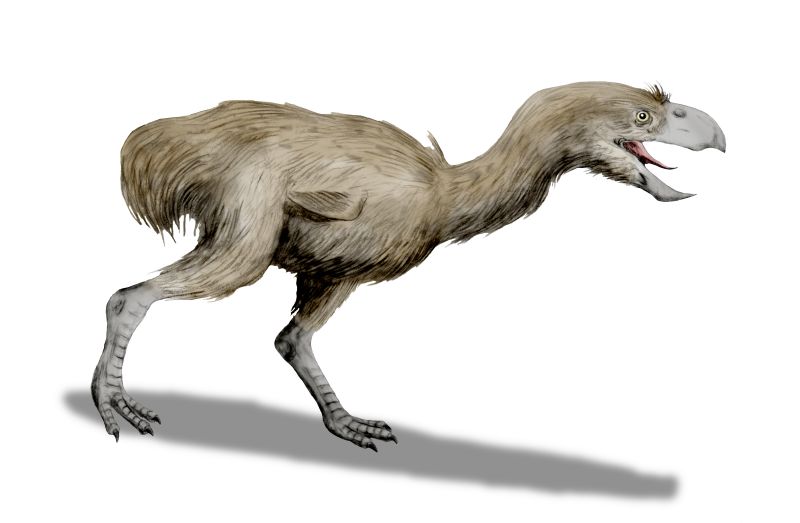
Kelenken Guillermoi – the bird with the largest head
Here’s another flightless bird with a big head, but one that’s somewhat closer to present times. Mathematically speaking, of course, because you can’t imagine how long 15 million years actually is.
Kelenken guillermoi – for that’s what it was called – lived in the area that is now Argentina. It exceeded 2 meters in height and 160 kilograms in weight 3)”The Complete Dinosaur” – encyclopedia published by Indiana University Press in 2012. It is estimated that some specimens were around 2.7 meters in height and weighed 250 kilograms.
It had a big head. The largest known in any bird: 71 centimeters, including 45.7 centimeters of beak. You can imagine that it didn’t use it only for cuddling. It was a bird of terror.
Many are relieved, because in our times we cannot see any Kelenken guillermoi bird “in action”. We can only imagine how they attacked their prey. Maybe grabbed it in its beak and give it a good “flick”so that the bones would break, just as we do before we open a yogurt. Or maybe it didn’t even bother to “shake it up” maybe it killed it’s pray with a well-placed shot of its beak. Or, who knows, maybe it chased the poor animal and gave it a few bumps with its head during the pursuit until it’s pray was to dizzy from the pain and suffocated by the panic attacks that it gave up the fight.
However, the race would not last long, because massive bird reached a speed of 35 mph (56 kph) 4)”What on Earth?: 100 of Our Planet’s Most Amazing New Species” by Quentin Wheeler şi Sara Pennak, book published by Plume in 2013.
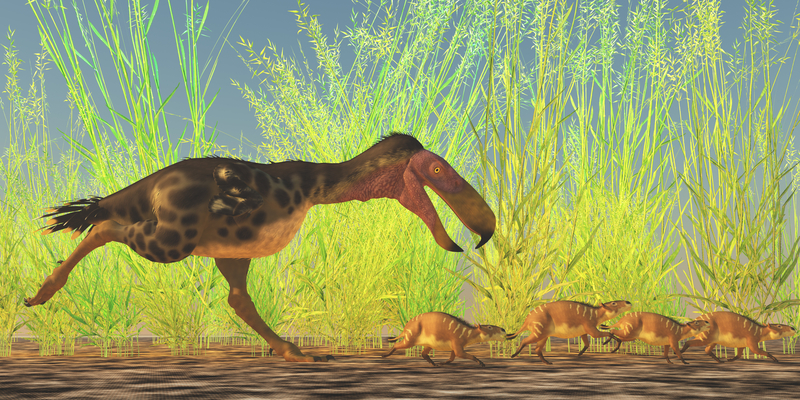
Phorusrhacos longissimus – armed from head to toe
In Miocene, in Patagonia were many beasts on two legs that roamed the lands. Among these we could find Phorusrhacos longissimus. It was a flightless bird of prey. It reached 2.5 meters in height (8.2 feet) and a weight of 130 kilograms (290 pounds).
Its beak was a real weapon. The entire skull measured 60 centimeters. The claws were equally dangerous.
Brontornis burmeisteri – the heaviest bird of prey
Another terror bird that lived during the Miocene, also in Patagonia, was Brontornis burmeisteri. When walking, it had about 1.75 meters in height, so it would fit through a door. But when it raised its head, this beauty reached 2.8 meters (9.2 feet). It was the heaviest bird of prey, with a weight estimated at 350-400 kg (770-880 pounds) 5)”Systematic revision of the Phorusrhacidae (Aves: Ralliformes)” – study conducted by M.F. Alvarenga and Elizabeth Höfling, published in Papéis Avulsos de Zoologia in 2003.
It would have been a pleasure to meet it. The final pleasure, that is.
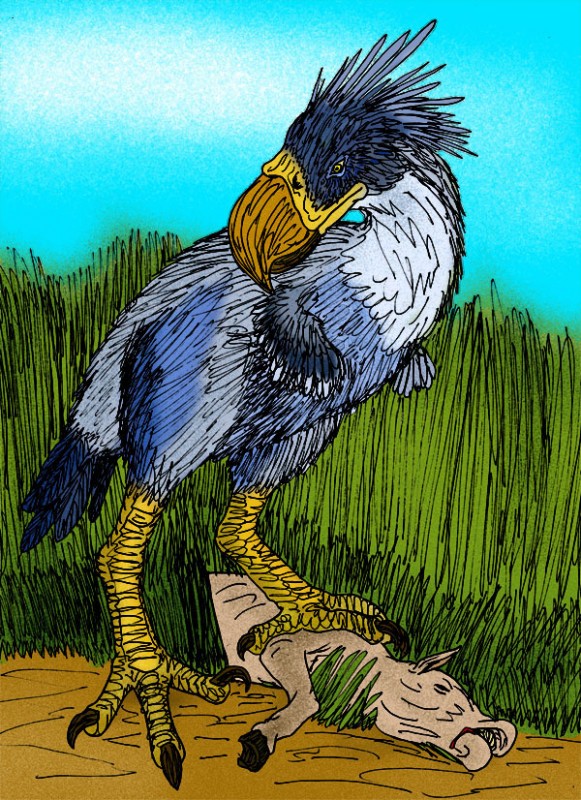
Titanis walleri – the giant hunter
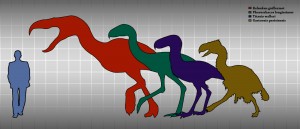
- Kelenken guillermoi
- Phorusrhacos longissimus
- Titanis walleri
- Gastornis parisiensis
When talking about Titanis walleri we’re starting to get closer to our times. It lived between 5 million to 2 million years ago in North America. To be specific, the fossils were discovered where there is now Florida and Texas. But probably it came from the south, where many of its relatives lived 6)”Dinosaur Memories” by Allen Debus, book published by iUniverse in 2002.
It was also a terror bird. In fact, it was the only terror bird in North America, from what we know so far 7)”Titanis walleri” by Christina Holland, article published by Florida Museum of Natural History, University of Florida in 2012.
With a height of 2.5 meters (8 feet), it reached 135 kilograms (300 pounds). It had small wings with which it couldn’t fly, but it was a bird of prey with equal countenance: the head had a large and powerful beak and a robust body.
Andalgalornis steulleti – hard headed
I assume you got it by now that terror birds had large heads and beaks to match. Andalgalornis steulleti was no exception. It had a 37 centimeters long head (14.5 inches) at a height of 1.4 meters (4.5 feet). It weighed 40 kilograms (90 pounds). The head seen from above seemed thin, but from the side it really was huge.
Andalgalornis steulleti lived in north-western part of Argentina, 6 million years ago. What was different from other terror birds and other birds in general was the rigidity of the skull. Skull bones had little mobility, being fixed to each other in an unusual way for birds. But that did not prevent the Andalgalornis steulleti to hunt as it pleased 8)”Flexibility along the Neck of the Neogene Terror Bird Andalgalornis steulleti (Aves Phorusrhacidae)” – study conducted by Claudia P. Tambussi, Ricardo de Mendoza, Federico J. Degrange, Mariana B. Picasso. Even some paleontologists such as Larry Marshall, consider it the most dangerous bird that ever existed 9)”Dinosaur Memories” by Allen Debus, book published by iUniverse in 2002.
Aepyornis maximus – giant elephant bird
Distant ancestors of today’s ostrich members of the Aepyornis family were so tall that they were called elephant birds. If you have lived several hundred years ago, you would have had the chances to see one in the flesh.
The largest elephant bird was Aepyornis maximus. With a height of 2.7 to 3 meters (9-10 feet), the huge bird weighed about half a ton (1000 pounds) 10)”Flightless Birds” by Clive Roots, book published by Greenwood in 200611)”The Beasts That Hide from Man: Seeking the World’s Last Undiscovered Animals” by Karl P.N. Shuker, book published by Paraview Press in 2003.
The weight of this bird is a controversial topic among specialists. As nobody weighed a specimen, only estimates can be made, based on current bird similarities. The problem is not only the methodology. It seems that the bird varies greatly in size. Moreover, it goes way back and ancient specimens were even higher. Trying to do an average? If so, what specimens to take into account? Or would it be better to better try to find the largest weight of a specimen?
Here are some studies:
- in 1947, Dean Amadon estimated a weight of 438 kilograms 12)”An Estimated Weight of the Largest Known Bird” – study conducted by Dean Amadon in 1947
- in 1992, the study made by K. Campbell Jr. and L. Marcus reached a weight of between 333 and 725 kilograms, with an average of 542 kilograms 13)”The relationship of hindlimb bone dimensions to body weight in birds” – study conducted by K. Campbell Jr. and L. Marcus in 1992
- in 2002, T.H. Worthy and Richard N. Holdaway concluded that the average specimens held by the Museum of New Zealand were 310 kg, but taking into account other data, the overall average would have been even lower: 275 kg 14)”The Lost World of the Moa: Prehistoric Life of New Zealand” by T.H. Worthy and Richard N. Holdawa, book published by Indiana University Press in 2002
However, it was a huge bird!
It made some equally big eggs. The largest fossilized egg that was found has a circumference of… 89 centimeters (35 inches)! The length is 33 centimeters (13 inches), and a volume of 9 liters 15)”The Cenozoic Era: Age of Mammals” – a work edited by John P. Rafferty and published by Rosen Education Service in 2010. You don’t want to know how it was laid. One such egg is about the size of 180 chicken eggs and three times more massive than the largest dinosaur eggs. Omelet for the whole tribe?
Aepyornis maximus had a long and powerful neck, small head and some remnants of wings that probably had no use. It had lots of thick feathers on its body that looked like a fur or a haystack of hair.
It had thick legs and strong claws. It’s highly unlikely that it was a great runner, but still was doing pretty well in life. It was herbivorous, so it didn’t bother its contemporaries too much.
Being so big, there were hardly any animals or birds to bother it in any way. All fun and games until men appeared and started to hunt it down. The coming of merchants from India and from other parts of the world in Madagascar, where it lived, troubled the waters, or rather the elephant bird’s life. So happens that specimens became fewer and fewer until all of them disappeared from the face of the Earth, probably in the seventeenth century. Not only hunting was to blame, but deforestation that had left it without favorite herbs and fruits 16)”The Beasts That Hide from Man: Seeking the World’s Last Undiscovered Animals” by Karl P.N. Shuker, book published by Paraview Press in 200317)”The Cenozoic Era: Age of Mammals” – a work edited by John P. Rafferty and published by Rosen Education Service in 2010.
In Arabic folklore there are some legends about a giant bird called roc, which could raise elephants in the air and even eat them whole. It’s the one that Sindbad flew on. Some speculated that this bird would have been Aepyornis maximus, only difference would be that roc is said to have had a wingspan of 16 meters.
Who knows, maybe a storyteller felt inspired by an elephant bird. Fairytales, right? Our ancestors also liked to exaggerate for the sake of the storytelling.
Dromornis stirtoni – the half-ton goose
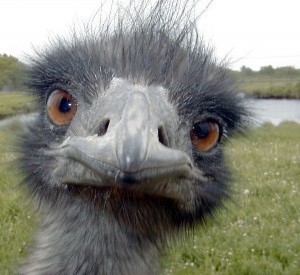
Although it’s like a giant emu (even being called “super-emu”), Dromornis stirtoni was a water bird.
The little “Goose” was 3 meters (10 feet) in height. Some specialists consider that its height was slightly bigger than that of Aepyornis maximus. Their weights were similar, and that’s why it’s even more questionable which weighed more.
Dromornis stirtoni lived in Australia, since 8 million years ago until 30,000 years ago.
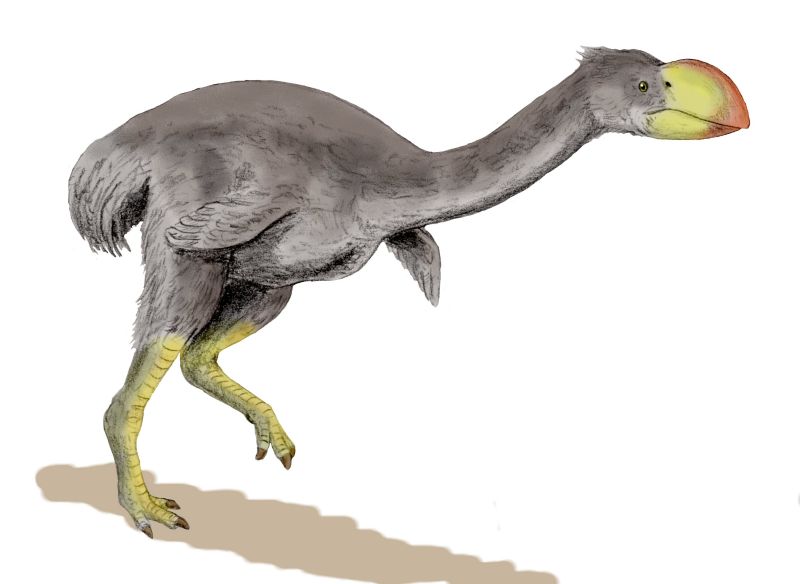
Bullockornis gliders – The Demon-Duck of Doom
Can you imagine a duck about 2.5 meters high (8.2 feet) and weighing up to 300 kg (660 lb)? It lived in Australia 12 million years ago until 50,000 years ago 18)”Giant duck a flesh eater” by Abbie Thomas, article published in ABC Science on May 30, 2000.
It was so big that it started liking the taste meat. Therefore, Bullockornis gliders was called the “Demon-Duck of Doom” and “Thunderbird”. Better than the “ugly duckling”.
Dinornis giganteus – the tallest bird
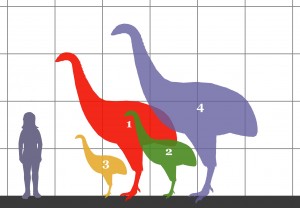
(Graphics: Conty / CC BY 3.0)
Similar to the elephant birds were the Dinornis birds from New Zealand, popularly called moa 19)An Extinct Moa Bird from New Zealand” by Leona McArdle, article published by National Museum of Ireland. If you could see such a bird, you might even come to say: “Moa!”
These birds varied in size. The largest were those of the species Dinornis giganteus, called Dinornis robustus. Females reached 3.6 meters, while males did not exceed 2.4 meters in height. Females were also heavier. They had between 76 and 249 kilograms. Males weighed from 34 kilograms to 85 kilograms 20)”South Island giant moa” – article by M.J. Szabo, published in 2013 and updated in 2015. It is obvious who wore the pants in that relationship. Males would pretty much tend not to argue.
Dinornis giganteus was a widespread species in the South Island of New Zealand. As time passed, this bird’s wings have shrunk until completely disappearing 21)An Extinct Moa Bird from New Zealand” by Leona McArdle, article published by National Museum of Ireland. Anyway it did not need to fly. It ate leaves, flowers, seeds, fruits and herbs that were on the ground or in trees that could reach with its long neck 22)”South Island giant moa” – article by M.J. Szabo, published in 2013 and updated in 2015. It was the largest terrestrial herbivore of the prehistoric era in the South Island. It had a powerful sense of smell and could also digest even the most fibred meals.
Before the arrival of humans in New Zealand, between 1250 and 1300, the only predator of Dinornis was Haast’s eagle, another large bird which I will tell you about in a shortly. When people saw a specimen of the Dinornis giganteus, they did not stop to marvel at its size. They also wanted to find out what it tastes like. Perhaps they liked it, because they continued hunting it and in a hundred years made it become extinct. For good! Not even climate changes in over 50,000 years compared to what humans did, this bird having a remarkable ability to adapt 23)”Giant moa had climate change figured out” – article published in ScienceDaily on August 3, 2012.
Harpagornis moorei – Haast’s eagle
Harpagornis moorei is the largest species of eagle known in existence. It was described by Julius von Haast in 1871, based on some remains, reason why it’s also called Haast’s eagle.
This eagle fed mainly on moa. The disappearance of Dinornis left Harpagornis without its favorite food. The latest fossils were 500 years ago.
The female was bigger than the male, had between 10 and 15 kilograms and be agile through the trees although it didn’t belong to the forest areas 24)”Maori legend of man-eating bird is true” by Paul Rodgers, article published in The Independent on September 14, 2009.
Harpagornis moorei had stronger legs than any other bird of prey. With its 7 centimeters long claws, it was like a flying tiger. Its pelvis was very hard and was used to tremendously strike its prey.
Could eat animals that weighed between one and 200 kilograms and, even though it was an ardent hunter, it also ate corpses. Legends say that it even ate humans and investigations tend to confirm this theory 25)”Maori legend of man-eating bird is true” by Paul Rodgers, article published by The Independent on September 14, 2009 .
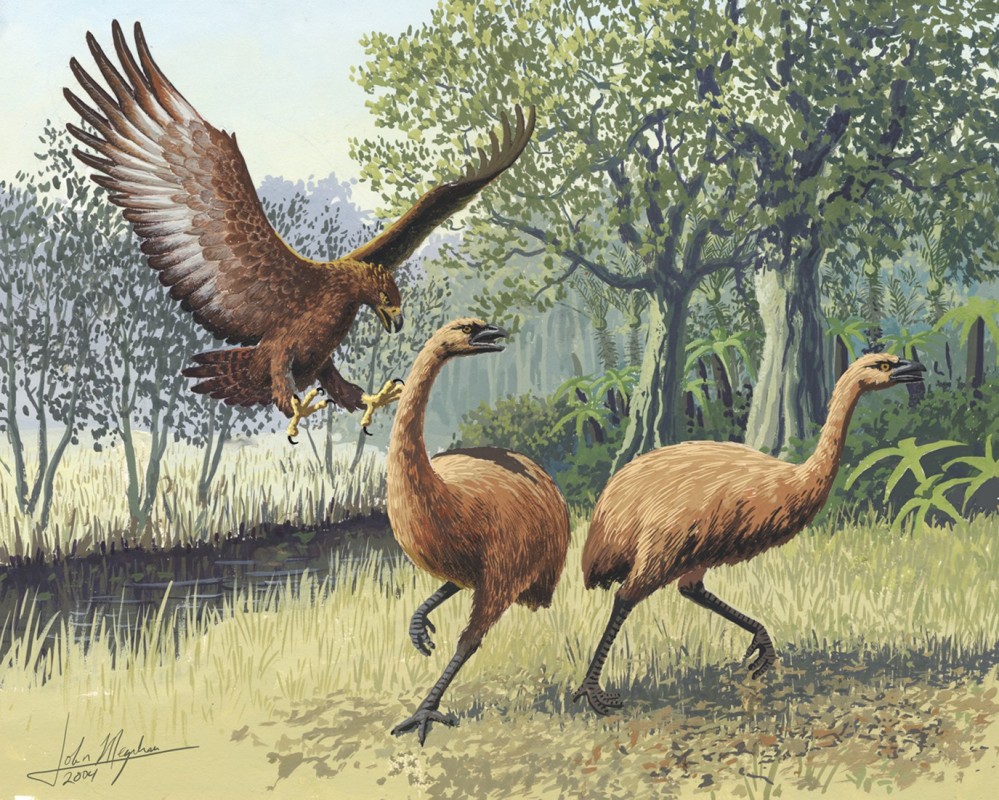
Argentavis magnificens – air giant
When it comes to size, wingspan is one of the most interesting criteria. Argentavis magnificens has been long considered the largest flying bird that ever existed. It had a wingspread of 7 meters. Something more than a Bede BD-5 aircraft 26)”Bede BD-5” in Wikipedia.
It had somewhere between 60 and 80 kilograms (140-180 pounds). It’s still a mystery how it managed to lift of from the ground with such a weight. Most likely, it knew how to use the ascending air currents. It could have taken flight from a slope, similar to how paragliders do 27)”The Rise of Birds: 225 Million Years of Evolution” by Sankar Chatterjee, book published by Johns Hopkins University Press in 2015.
They say it’s related to the vultures that exist nowadays. When sitting on the ground, its height reached 2 meters (6.6 feet). Can you imagine such a vulture?!
And it wasn’t the only one of its kind. Teratornithidae genre, of which Argentavis magnificens, belongs to, includes other species, all extinct. “All relatives” were slightly smaller, with wingspans of ‘only’ 3.5-5.5 meters.
I think Argentavis magnificens had an enviable digestive system because it was able to swallow a whole animal! Some believe it could have even gorged a calf, but is more likely that its victims were smaller.
Its skills did not seem to be very suitable for hunting, as birds of prey usually have. It could not catch prey with its claws, but it was supposed to glide so that it could catch it in its beak. And swallow it in flight.
Other theories consider that it ate animals that were already dead. And it could easily use its impressive towering stature to chase away other predators that had caught something.
Argentavis magnificens lived in the Late Miocene era, about 6-8 million years ago. Its fossils were discovered in Argentina.
Pelagornis chilensis – great flying fisherman
Another South American giant flying bird was Pelagornis chilensis. It lived where Chile is now 10 million years ago and disappeared by 5 million years ago. It had a wingspread of 5 meters (17 feet) and weighed 29 kilograms (64 pounds). For its size, it was quite lite, and that because of its thin-walled bones.
Pelagornis chilensis is part of the pseudo-teeth bird family. On the outline of its beak it had some bony prominences that made it easier to grab fish from the water’s surface over which it flew 28)”A Toothy Bird With a 17-Foot Wingspan Once Ruled the Air” by Eliza Strickland, article published in Discover on Septembner 16, 2010.
Pelagornis sandersi – the largest flying bird
The bird with the largest wingspan discovered so far is Pelagornis sandersi: having 7.3 meters (24 feet). Being related to Pelagornis chilensi, was also a bird with pseudo-teeth. Lived 25 million years ago 29)”Biggest Flying Seabird Had 21-Foot Wingspan, Scientists Say” by Dan Vergano, article published in National Geographic on July 7, 2014.
It was discovered in 1983 in Charleston, South Carolina. The man who discovered a fossilized specimen is Albert Sanders, museum curator and expert in extinct whales. He put the bones in a drawer in which they stayed for thirty years until their turn came to be analyzed by experts. Only in 2014 researchers concluded that this was a winged bird larger than Argentavis magnificens.
Do you know what the size of a football goalpost is? I’m not beating about the bush, it’s really related to our topic. I don’t want you to start searching so, behold the answer: 7.32 meters long and 2.44 meters in height. Do you notice the coincidence? In a fictional match, Pelagornis sandersi would be perfect goal keeper!
These are about all the largest extinct bird that ever existed from what we know so far. Some more alike those we have today, some less. Too bad we can’t know what colors they had. Were they as spectacular?
A spectacular and documented presentation of all the extinct giant birds, with pictures of each type of them
References
| ↑1 | ”Isotopic and anatomical evidence of an herbivorous diet in the Early Tertiary giant bird Gastornis. Implications for the structure of Paleocene terrestrial ecosystems” – study by de D. Angst, C. Lécuyer, R. Amiot, E. Buffetaut, F. Fourel, F. Martineau, S. Legendre, A. Abourachid & A. Herrel, published in Naturwissenschaften in April 2014 |
|---|---|
| ↑2 | ”Systematic revision of the Phorusrhacidae (Aves: Ralliformes)” – study conducted by M.F. Alvarenga and Elizabeth Höfling, published in the Papéis Avulsos de Zoologia în 2003 |
| ↑3 | ”The Complete Dinosaur” – encyclopedia published by Indiana University Press in 2012 |
| ↑4 | ”What on Earth?: 100 of Our Planet’s Most Amazing New Species” by Quentin Wheeler şi Sara Pennak, book published by Plume in 2013 |
| ↑5 | ”Systematic revision of the Phorusrhacidae (Aves: Ralliformes)” – study conducted by M.F. Alvarenga and Elizabeth Höfling, published in Papéis Avulsos de Zoologia in 2003 |
| ↑6, ↑9 | ”Dinosaur Memories” by Allen Debus, book published by iUniverse in 2002 |
| ↑7 | ”Titanis walleri” by Christina Holland, article published by Florida Museum of Natural History, University of Florida in 2012 |
| ↑8 | ”Flexibility along the Neck of the Neogene Terror Bird Andalgalornis steulleti (Aves Phorusrhacidae)” – study conducted by Claudia P. Tambussi, Ricardo de Mendoza, Federico J. Degrange, Mariana B. Picasso |
| ↑10 | ”Flightless Birds” by Clive Roots, book published by Greenwood in 2006 |
| ↑11, ↑16 | ”The Beasts That Hide from Man: Seeking the World’s Last Undiscovered Animals” by Karl P.N. Shuker, book published by Paraview Press in 2003 |
| ↑12 | ”An Estimated Weight of the Largest Known Bird” – study conducted by Dean Amadon in 1947 |
| ↑13 | ”The relationship of hindlimb bone dimensions to body weight in birds” – study conducted by K. Campbell Jr. and L. Marcus in 1992 |
| ↑14 | ”The Lost World of the Moa: Prehistoric Life of New Zealand” by T.H. Worthy and Richard N. Holdawa, book published by Indiana University Press in 2002 |
| ↑15, ↑17 | ”The Cenozoic Era: Age of Mammals” – a work edited by John P. Rafferty and published by Rosen Education Service in 2010 |
| ↑18 | ”Giant duck a flesh eater” by Abbie Thomas, article published in ABC Science on May 30, 2000 |
| ↑19, ↑21 | An Extinct Moa Bird from New Zealand” by Leona McArdle, article published by National Museum of Ireland |
| ↑20, ↑22 | ”South Island giant moa” – article by M.J. Szabo, published in 2013 and updated in 2015 |
| ↑23 | ”Giant moa had climate change figured out” – article published in ScienceDaily on August 3, 2012 |
| ↑24 | ”Maori legend of man-eating bird is true” by Paul Rodgers, article published in The Independent on September 14, 2009 |
| ↑25 | ”Maori legend of man-eating bird is true” by Paul Rodgers, article published by The Independent on September 14, 2009 |
| ↑26 | ”Bede BD-5” in Wikipedia |
| ↑27 | ”The Rise of Birds: 225 Million Years of Evolution” by Sankar Chatterjee, book published by Johns Hopkins University Press in 2015 |
| ↑28 | ”A Toothy Bird With a 17-Foot Wingspan Once Ruled the Air” by Eliza Strickland, article published in Discover on Septembner 16, 2010 |
| ↑29 | ”Biggest Flying Seabird Had 21-Foot Wingspan, Scientists Say” by Dan Vergano, article published in National Geographic on July 7, 2014 |
Did you like it? Now it’s your turn. You’ll make us very happy if you share this article with your friends:
And don’t forget to let us know what you think – we are really interested in your thoughts on this!
